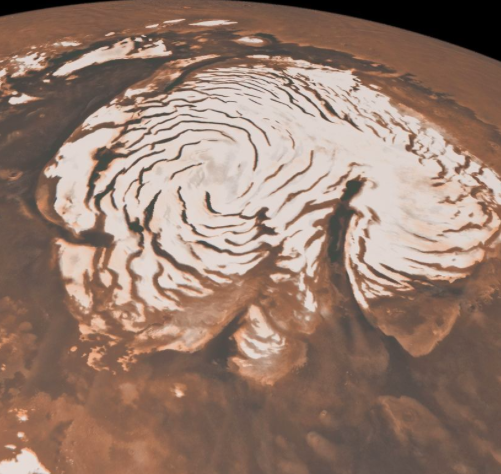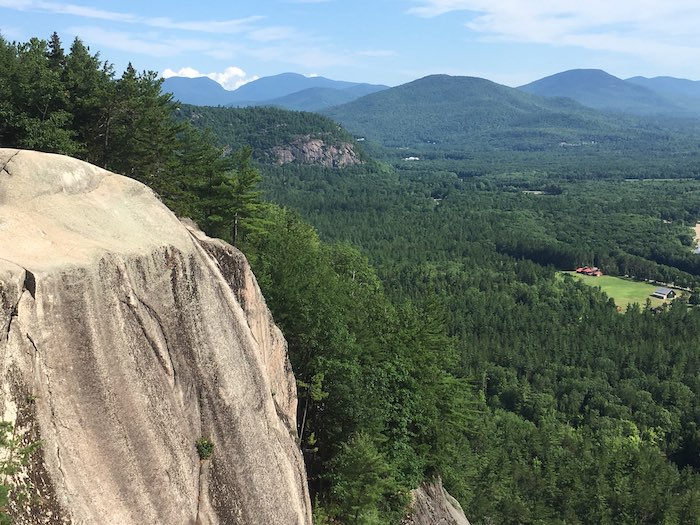Stop the presses! A couple weeks ago, Freeskier.com dropped this bombshell on the skiing universe:
Vail Resorts buys Mars, plans intergalactic luxury ski resort
BROOMFIELD,CO—In a press release sent out this week, CEO of Vail Resorts, Rob Katz, announced that Vail will be purchasing Mars and building the universe’s first intergalactic luxury ski resort. The resort, yet to be named, will provide Epic Pass holders and guests the unique chance to “send it amongst the stars” and construction will begin in 2025.
“We’ve seen tremendous success from gobbling up ski areas left and right,” noted Katz in the statement, “so we thought we’d capitalize on opportunities beyond our own atmosphere here on Earth. Eventually, we’ll be able to provide our guests fresh air that we’ve been able to vacuum right from the Rocky Mountains, just like in that Mel Brooks movie, Spaceballs. Gosh, I love that movie.”
Yes, it was satire — not the part about Vail buying up ski areas left and right, but the part about Vail planning a resort on Mars. Though I’m afraid some people might have taken it literally; it’s no longer on Freeskier’s website, which is too bad since it was really funny. The snippet above is the only portion I could still find on line.
That said, the piece reminded me of something I wrote a couple years ago. (Don’t let it be said that TheSkiDiva isn’t ahead of the curve!) So here again, for your reading pleasure…..
Ski Diva’s Guide to Skiing the Solar System
It’s sad but true: climate change is real, and it’s going to mean big problems for us skiers. So even though our skiing right now is limited to Earth, someday we may be forced to look elsewhere. Luckily, we live in a solar system with 8 other planets and a multitude of moons and asteroids. And who knows — one day these could end up as primo ski destinations.
With that in mind, I’ve put together a handy guide to help us Ski Divas know what to expect. Some of this is from Popular Science, some from Wikipedia, and some from NASA, itself. And while I don’t think we’ll be doing this any time soon, it doesn’t hurt to be prepared:
• Imagine skiing a mountain that’s nearly three times higher than Everest! That’s Olympus Mons, the tallest planetary mountain in the solar system. Located on Mars, Olympus Mons stands at 21.9 km, or 13.6 miles. In addition to being tall, it is also very wide (340 miles or 550 kilometers) and covers an area larger than the entire chain of Hawaiian islands.1
• Tune up your ice skis! Yes, there is ice on Mars. The planet has northern and southern polar ice caps that grow and shrink depending on the season. During the winter, the poles get absolutely no sun, and the resulting drop in temperature freezes both water into ice and carbon dioxide into dry ice.2
• Saturn’s sixth largest moon, Enceladus, may be the ideal place for hitting the interplanetary slopes. Covered in miles of ice, Enceladus is home to numerous geysers, which jettison ice particles into the air above the moon’s surface. The result is something like snowfall as the ice particles fall back to the ground, coating Enceladus in extremely fine ice crystals. Paul Schenk of the Lunar and Planetary Institute in Houston notes the “snow” would provide great skiing conditions. However, there’s not enough on the surface yet. Give it a couple tens of millions of years or so, and the slopes will be piled high. The other problem? The temperature is -330 degrees Fahrenheit. 2
• Remember to pack your warmest layers. The largest of Neptune’s 13 moons, Triton, is one of the coldest objects in our solar system. Also home to ice volcanoes, the moon’s surface belches out a mixture of liquid nitrogen, methane, and dust, all of which freeze immediately in the air. The flakes then snow back down to Triton’s surface, which mostly consists of frozen nitrogen. An almost non-existent atmosphere doesn’t help to curb the freezing temperatures (-391 degrees Fahrenheit). 2
• Seasons on other planets are extremely different from the traditional spring, summer, fall and winter here on Earth. Although they generally have to do with orbital variations and axial tilt, weather variations are typically more pronounced for those planets closer to the Sun. With an axial tilt of only 3 degrees, for example, Jupiter and Venus have literally no difference between the seasons. However, Jupiter’s distance from the sun cause its seasons to change more slowly. The length of each season is roughly three years. And seasons on Neptune can last for 40 years! Talk about endless winter! 2
• If you decide to take a ski trip to Mars, better be prepared to be gone a while. According to NASA, a vessel carrying humans would take roughly six months to travel to Mars and another six months to come back. In addition, you’d have to stay 18-20 months on Mars before the planets re-align for a return trip. In all, the mission would take roughly 2 1/2 years.3
So anyone packing their bags?
References:
1. Wikipedia
2. Popular Science
3. Infoplease






